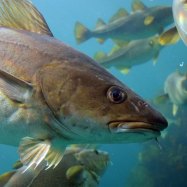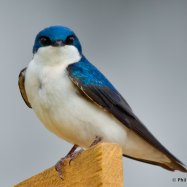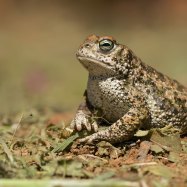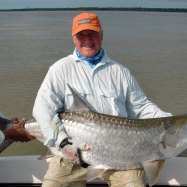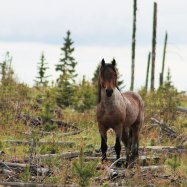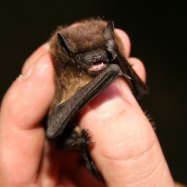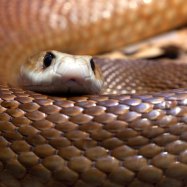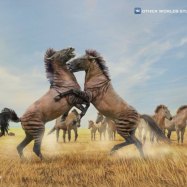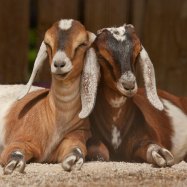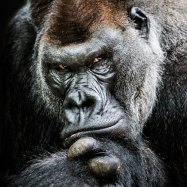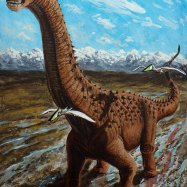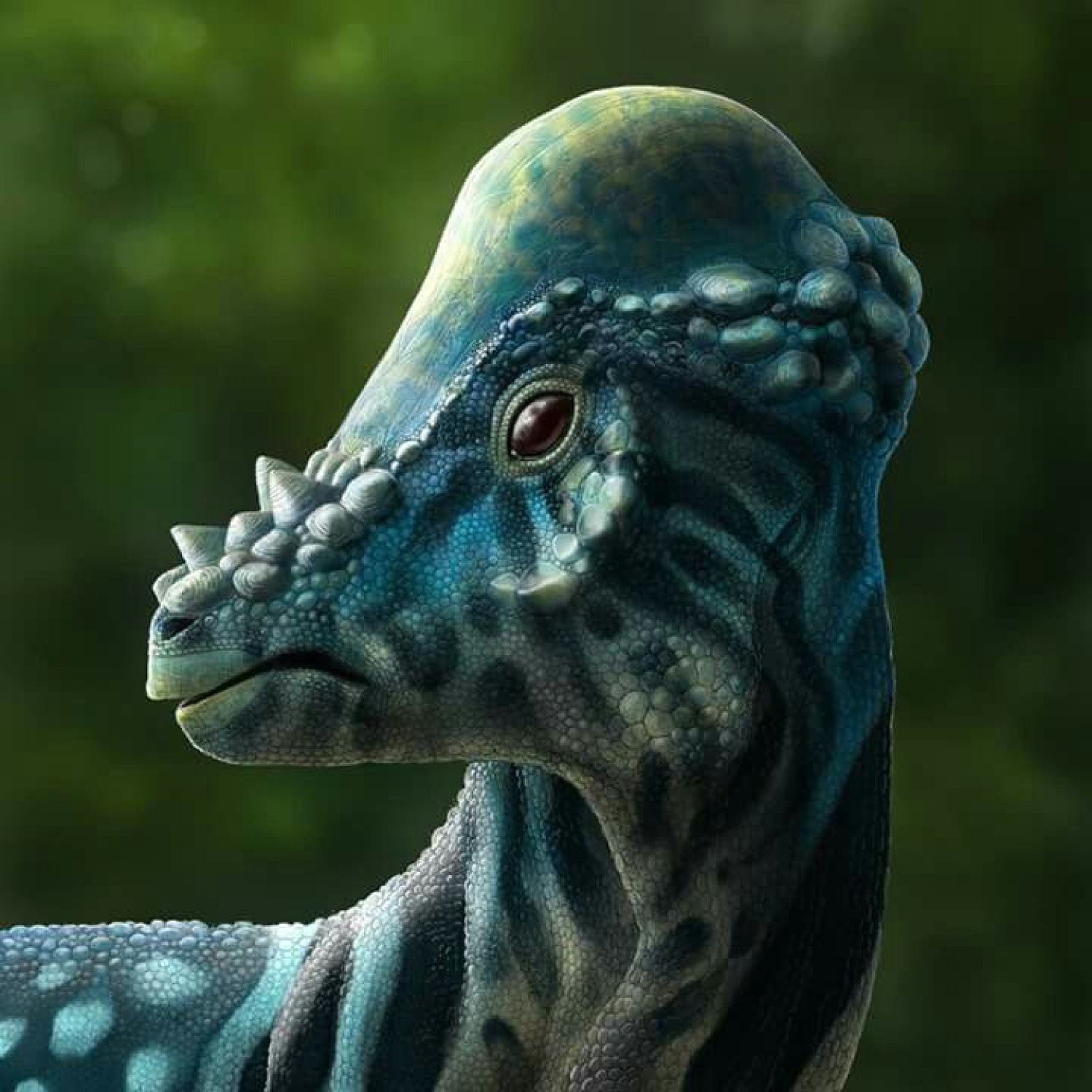
Pachycephalosaurus
4.5 - 6 meters
Pachycephalosaurus, also known as thick-headed lizard, was a large herbivorous dinosaur with a domed skull. These creatures roamed the lands of Montana, South Dakota, and Wyoming about 65 million years ago. They measured between 4.5 to 6 meters in length and were part of the Pachycephalosauridae family. Fossil remains and footprints have been found, giving us a glimpse into the life of this ancient animal.
Animal Details Summary:
Common Name: Pachycephalosaurus
Kingdom: Animalia
Habitat: Terrestrial
Pachycephalosaurus: The Ancient Armored Dome Head
The world of dinosaurs is an intriguing one, with countless species that have roamed the Earth long before humans. And among these fascinating creatures, one stands out with its unique physical appearance and behavior - the Pachycephalosaurus. This armored herbivore, with its thick skull and bulky body, has captured the hearts and minds of paleontologists and enthusiasts alike. In this article, we'll delve into the characteristics and behavior of this remarkable dinosaur, from its habitat to its feeding method, and how it earned its name as the "dome head Pachycephalosaurus."Discovering Pachycephalosaurus
Pachycephalosaurus, derived from the Greek words "pachy" meaning thick or dense, and "cephalos" meaning head, was first discovered in the late 1800s by paleontologist Edward Drinker Cope in Wyoming. But it wasn't until the early 1900s that it was officially named by paleontologist Barnum Brown. Several specimens have been found since then, mostly in the badlands of North America, specifically in Montana, South Dakota, and Wyoming.The Physical Characteristics of Pachycephalosaurus
Pachycephalosaurus belongs to the family Pachycephalosauridae and is classified as a member of the Ornithischia order, which includes dinosaurs with a bird-like pelvis. It is also in the sauropsida class, which refers to a diverse group of reptiles and birds. Pachycephalosaurus has a large and bulky body, measuring about 4.5 to 6 meters in length and weighing around two tons. Its long hind limbs and shorter forelimbs allowed it to move on two legs.However, the most distinct feature of Pachycephalosaurus is its thick and bony skull, which is believed to have been up to 10 inches thick at its thickest point Paleoparadoxia. Its skull was also dome-shaped, resembling a football helmet, and featured a flat face with small, narrow eyes. The skull also had small openings for the nose and large openings for the eyes, making it easier to breathe and see.
Armor for Defense
The thick, bony skull of Pachycephalosaurus was not just for show, but also served as a form of protection. The dinosaur's skull dome was made up of tightly packed bones, known as osteoderms, which acted as a shield in case of any head-to-head collisions. The skull was also lined with grooves and bumps, indicating that the skin was thick and possibly covered with some form of armor, such as scales.Habitat and Geographical Distribution
Pachycephalosaurus inhabited the Earth during the Late Cretaceous period, about 70 million years ago. This period was characterized by a warm climate, lush vegetation, and diverse animal life. This herbivore was mainly found in North America, specifically in what is now known as the United States. Its fossils have been discovered in Montana, South Dakota, and Wyoming, indicating that it roamed over a large area.Living on Land
Pachycephalosaurus was a terrestrial animal, meaning it lived and moved on land. Its strong hind legs and short forelimbs made it a fast runner, and it could cover long distances in search of food and water. Its sharp claws were also used for defense and for digging up vegetation.Feeding Habits
As an herbivore, Pachycephalosaurus fed mainly on plants, such as ferns, greenery, and conifers. Its sharp beak and strong back teeth helped it to grind and process the tough plant material. The structure of its skull also suggests that it could have been a selective eater, consuming only certain parts of plants that were easier to digest. This theory is supported by the discovery of gastroliths, smooth stones found in the stomach area, which helped in the digestion of food.Colorful Camouflage
While it is impossible to determine the exact color of Pachycephalosaurus, experts believe that its skin was likely mottled with shades of brown, gray, and green, making it blend in with its surroundings. This camouflage would have been beneficial in avoiding predators, such as Tyrannosaurus Rex, which lived in the same area and during the same time period.A Social Species
One of the most interesting facts about Pachycephalosaurus is its social behavior. Paleontologists have studied and found that this dinosaur lived in large groups, with several individuals living together in the same location. This is evident from the discovery of numerous fossilized skulls in the same area, which led scientists to believe that they may have lived in herds. However, there is still some debate among experts about whether the dinosaurs may have been solitary or had a more complex social structure.Possible Herding Behavior
While there is no concrete evidence of herding behavior in Pachycephalosaurus, researchers have found that its thick skull may have been used for display and combat among members of the same species. It is possible that these dinosaurs used their domed heads to intimidate or challenge others in their group, much like modern-day rams. This could also be a way of establishing dominance and hierarchy within the herd.A Territorial Defense Mechanism
Another theory is that the thick skull of Pachycephalosaurus may have been used for territorial defense against predators. The sheer size and strength of the skull could have been used to ram predators and drive them away from the herd. Additionally, the exaggerated domed head could have acted as a visual deterrent to predators, making them think twice before attacking.Extinction and Legacy
Pachycephalosaurus, along with other dinosaurs, went extinct about 65 million years ago, marking the end of the Cretaceous period. It is believed that a catastrophic event, such as a large meteor impact, caused drastic changes in the Earth's climate, leading to the demise of these prehistoric creatures.But even in extinction, Pachycephalosaurus continues to fascinate us. Its unique physical features and social behavior have made it a subject of numerous studies and documentaries. The image of these dome-headed dinosaurs can be seen in movies and books, immortalizing them in popular culture.
In Conclusion
Pachycephalosaurus may have gone extinct millions of years ago, but its legacy lives on through its fossilized remains and its enduring allure. Its thick, bony skull and bulky body make it a fascinating creature, one that has captured our imagination and helped us understand the diverse world of dinosaurs. And while we may never know everything about this ancient herbivore, the little glimpses of its past that we do have only add to its mystery and appeal.

Pachycephalosaurus
Animal Details Pachycephalosaurus - Scientific Name: Pachycephalosaurus
- Category: Animals P
- Scientific Name: Pachycephalosaurus
- Common Name: Pachycephalosaurus
- Kingdom: Animalia
- Phylum: Chordata
- Class: Sauropsida
- Order: Ornithischia
- Family: Pachycephalosauridae
- Habitat: Terrestrial
- Feeding Method: Herbivorous
- Geographical Distribution: North America
- Country of Origin: United States
- Location: Montana, South Dakota, Wyoming
- Animal Coloration: Varied
- Body Shape: Large with a domed skull
- Length: 4.5 - 6 meters
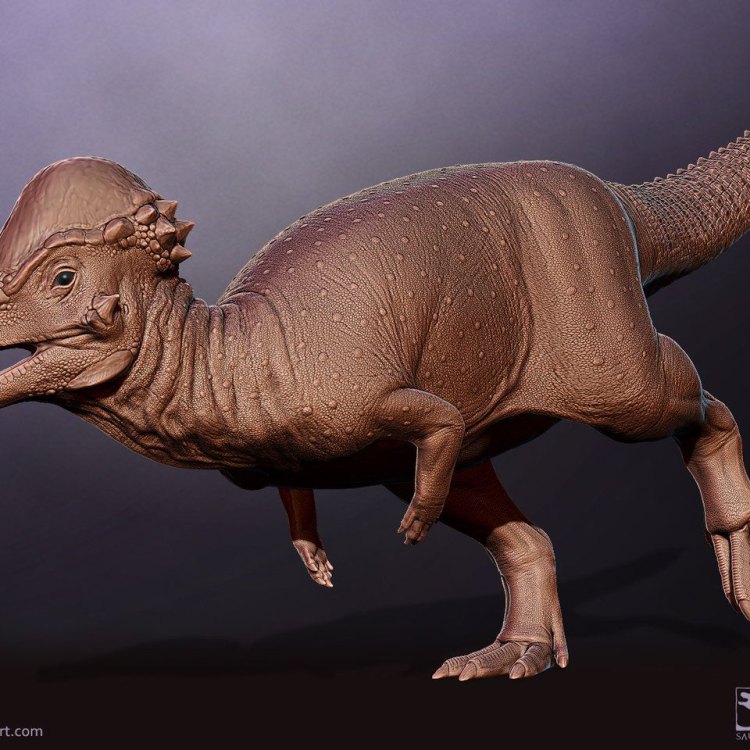
Pachycephalosaurus
- Adult Size: Large
- Average Lifespan: Unknown
- Reproduction: Sexual
- Reproductive Behavior: Unknown
- Sound or Call: Unknown
- Migration Pattern: Non-migratory
- Social Groups: Unknown
- Behavior: Aggressive territorial
- Threats: Extinction
- Conservation Status: Extinct
- Impact on Ecosystem: Unknown
- Human Use: Fossils and research
- Distinctive Features: Thick, bony skull
- Interesting Facts: Pachycephalosaurus is known for its thick, bony skull that could reach up to 10 inches thick. It used this skull for headbutting in competition for mates or territory. Despite its aggressive appearance, Pachycephalosaurus was an herbivorous dinosaur.
- Predator: Unknown
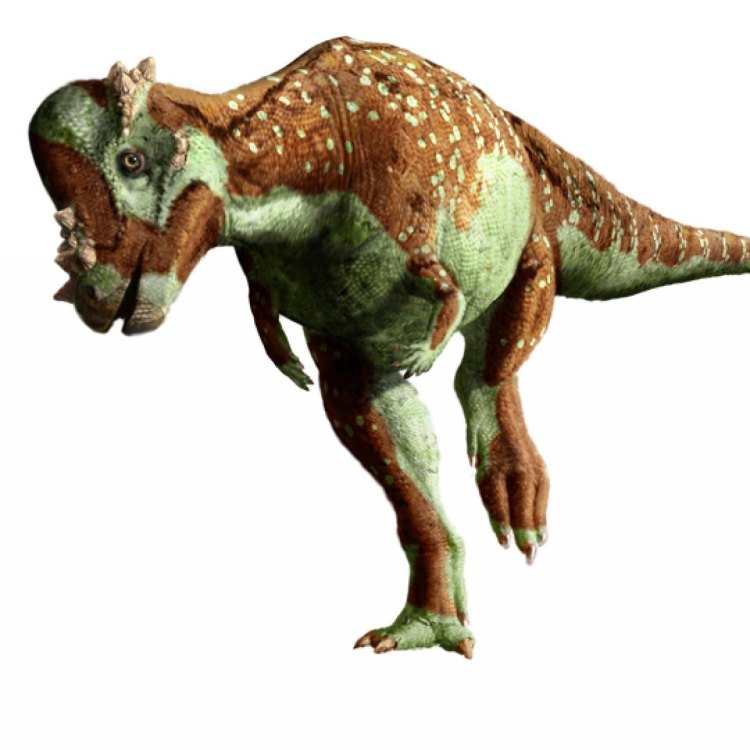
Pachycephalosaurus
The Mighty Pachycephalosaurus: An Extinct Giant with a Thick Skull
The world of dinosaurs is filled with diverse and fascinating creatures. From the towering Tyrannosaurus Rex to the tiny but deadly Velociraptor, these ancient creatures continue to capture our imaginations. One such dinosaur is the Pachycephalosaurus, and it is unlike any other dinosaur that we have seen before.Pachycephalosaurus or "thick-headed lizard" is a genus of dinosaur that lived during the Late Cretaceous period, around 70 million years ago PeaceOfAnimals.Com. The name refers to its distinctive feature- a thick, bony skull that could reach up to 10 inches thick. This skull was used for headbutting, which is the source of its other common name, "bone-headed dinosaurs." Today, let's dive into the world of Pachycephalosaurus and discover its unique features, behavior, and its impact on the ecosystem.
A Colossal Adult Size
The Pachycephalosaurus was an enormous dinosaur that could grow up to 15 feet in length and weigh around 1,000 pounds. It was one of the largest of its kind and was a formidable sight. Its size alone was enough to intimidate any potential threats, and combined with its thick skull, it made a fierce competitor.Interestingly, the size of Pachycephalosaurus varied between different individuals. Some fossils showed that there were significant differences in the size of their skulls, ranging from 3-10 inches thick, indicating sexual dimorphism. It is believed that these differences played a role in their reproductive behavior, but the exact details remain a mystery Polish Chicken.
Unknown Lifespan and Reproduction
Due to the sparse fossil record, the average lifespan of Pachycephalosaurus remains unknown. However, it is estimated that they could have lived for up to 10-15 years, similar to other large dinosaurs of the time.The reproductive behavior of Pachycephalosaurus is also unknown, although it is believed to have been sexual, like most dinosaurs. The differences in size and the thick skull of males indicate the possibility of competition for mates and territory. However, without a complete understanding of their behavior, we can only speculate.
A Territorial and Aggressive Behavior
Pachycephalosaurus was known to be an aggressive and territorial dinosaur. With its large size and thick skull, it was a force to be reckoned with. These dinosaurs were bipedal, with two strong hind legs, and could move with great speed. They also had a long, stiff tail for balance and support, making them efficient predators and herbivores.Their thick skull, with a domed shape, was their most distinctive feature. It was made up of solid bone and had a massive structure, providing protection from any potential threats. However, the main purpose of this skull was to headbutt other dinosaurs during battles for dominance or competition for mates and territory.
Unknown Sounds or Calls and Social Groups
Unfortunately, due to the limited fossil record, we do not know much about the sounds and calls Pachycephalosaurus could make. It is believed that they could have communicated with each other through vocalizations, but the exact methods remain a mystery.Similarly, the social groups of Pachycephalosaurus are also unknown. It is believed that they could have lived and traveled in small herds, but again, this is only speculation. More research and fossil discoveries are needed to unravel the mysteries of their social behavior.
Unaffected by Migration Patterns
Unlike many other dinosaurs, Pachycephalosaurus was non-migratory. They did not have the need to travel long distances in search of food or suitable habitats, as they were herbivores. This means that they were likely found in the same area year-round, making their territory and dominance even more critical.Threatened with Extinction
Despite their intimidating appearance and aggressive behavior, Pachycephalosaurus was not able to escape the fate that befell many dinosaurs- extinction. They, along with other dinosaurs, vanished around 65 million years ago, at the end of the Cretaceous period. The exact cause of their extinction is a subject of debate among scientists, with theories ranging from climate change to asteroid impacts.An Unknown Impact on the Ecosystem
Pachycephalosaurus was once a dominant species of its ecosystem, and its presence must have played a vital role in maintaining the balance of the environment. However, with its extinction, we can only speculate about the impact this dinosaur had on its ecosystem. It is likely that as an herbivore, it would have played a crucial role in the food chain, providing sustenance to carnivorous dinosaurs.Human Use of Fossils for Research
Today, the only way we can know about Pachycephalosaurus is through fossils. These fossilized remains have provided valuable insights into the world of dinosaurs and continue to be a significant source of research for scientists. Pachycephalosaurus fossils have been found in North America, and they are highly sought after by paleontologists, researchers, and dinosaur enthusiasts.In Conclusion
Pachycephalosaurus may be long gone, but its legacy continues to fascinate us. This unique dinosaur, with its enormous size, thick skull, and aggressive behavior, is a testament to the diversity of the prehistoric world. Through careful study and research, we continue to uncover its mysteries, and perhaps one day, we will have a complete understanding of this magnificent creature.So, the next time you come across the term Pachycephalosaurus, remember its distinctive features, its aggressive behavior, and the role it played in its ecosystem. It was a true giant of its time, and its thick skull remains a symbol of its strength and power. May we continue to learn from these ancient creatures and never forget their remarkable existence.
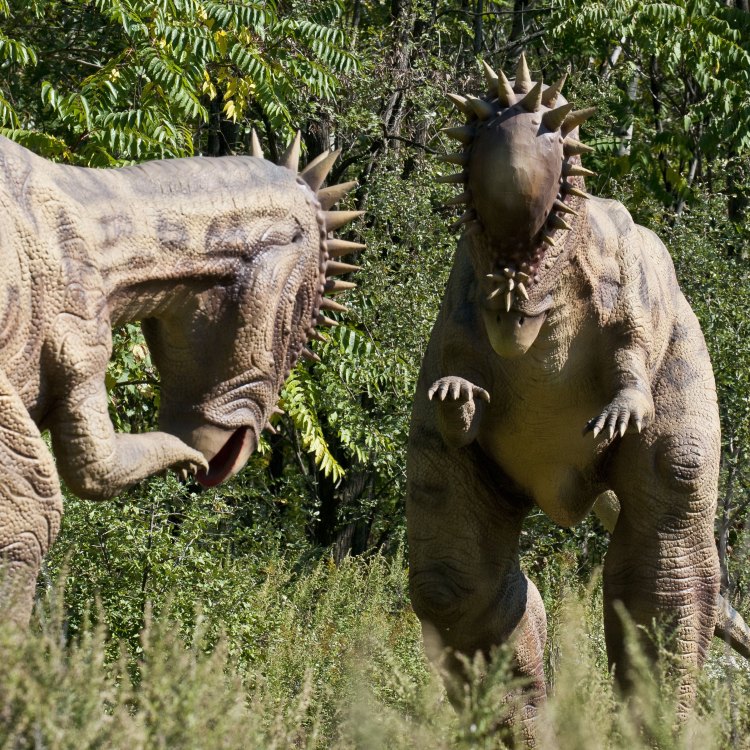
Pachycephalosaurus: The Ancient Armored Dome Head
Disclaimer: The content provided is for informational purposes only. We cannot guarantee the accuracy of the information on this page 100%. All information provided here may change without prior notice.

